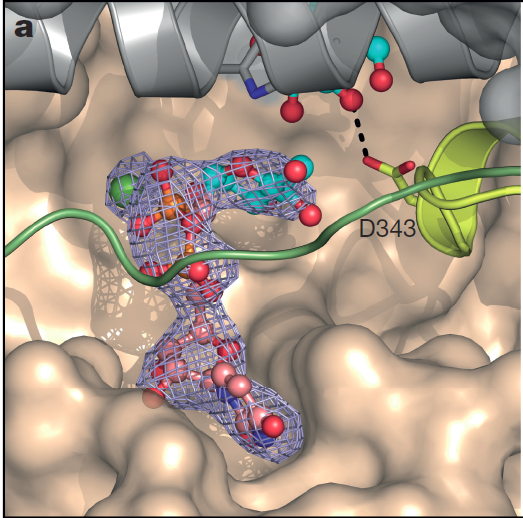
Watching wood being made

The most common polymer on earth is cellulose, the major structural component of plant cell walls. However we have very little knowledge, at the molecular level, of how cellulose is synthesised. In a collaboration with the group of Jochen Zimmer at the University of Virginia, the Withers laboratory has provided "snapshots" of the process of synthesis. To get these insights the Withers laboratory synthesised a series analogues of the natural building blocks used by the enzyme responsible for cellulose assembly -cellulose synthase- that had been designed to "freeze-frame" the synthetic reaction at various stages. The Zimmer laboratory then used X-ray crystallography to solve the three-dimensional structure of a bacterial cellulose synthase that had been combined, individually, with each of these analogues. These images helped show how the cellulose polymer elongation occurred and how the enzyme ratchets the growing polymer across the cell membrane for deposit in the extracellular medium.
Reference: Observing cellulose biosynthesis and membrane translocation crystallo